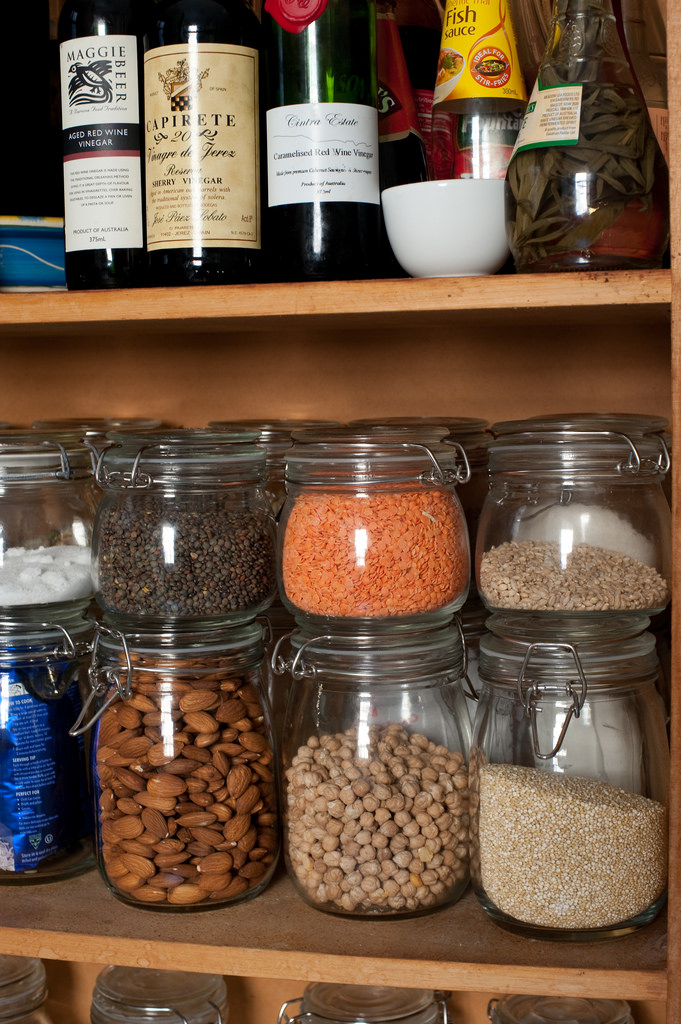By Laura Slatalla, Recent ASU Nutrition Student
Convenience often drives decisions, especially when it comes to what to eat. Imagine those days where you get home from work and grab whatever prepackaged product is within reach and wash it down with a soda. If there had been portioned nuts, or wheat crackers with cheese, or cut up veggies with a hummus dip, those options would have been perfectly satisfactory. If iced tea was already sitting in a pitcher, or cold water was waiting in your water bottle, they may have replaced that soda.

Keeping our closets and desks organized make life so much simpler and is a huge relief during a busy day, but the fridge and pantry go neglected. A couple changes could make healthier choices quicker and more convenient. Getting organized is a great step to a healthier lifestyle!
First, you need the tools. Make sure you have plastic wrap and sandwich bags, or sealable containers. Grab a few plastic bins to put in the pantry. Have the trash can and an empty box nearby for expired food and nonperishable goods that you can donate. Grab a pen and some masking tape or stickers for labeling. Begin with a purge of all the stuff you haven’t been using or forgot about. If it won’t fit into your meals in the next month, donate it.
If you plan a weekly menu then organizing the bins by days or meals is a great way to get started. Put all the dry ingredients for dinner on Monday into one bin. Portion out snacks into the days so that you don’t overeat and finish a whole box of granola bars in one day. If you’re more of a spur-of-the-moment planner, then organize the bins by categories. All grains can go in one, canned goods in another, and snacks also get a separate bin. This will cut down on meal prep, similar to laying out an outfit the night before.
The same principles can be applied to the fridge. Put all the cold vegetables in one drawer. All the dairy products go in one area. The condiments can be placed together. Baskets easily slide out and keep items together. Try and keep the items you have visible, and only shop for what you need. Less options will narrow down the time it takes to choose a snack or meal, and everything will be more visible and easier to reach.
Portion out foods, especially snacks. Keeping one shelf in the fridge devoted to plastic containers of cut up veggies and cups of fruit salad saves the bored snacker from making decisions they’ll regret. Prepare and portion snacks on a Sunday when you have free time, then you’ll be eating those fresh vegetables with a crunch right after you walk through the door.
Keep a list on the fridge or inside the pantry door of items you need to pick up from the grocery store. I’ve started a recipe and halfway through realized that I was missing something, and a list would have saved me the hassle. The items you find yourself buying the most often can be bought in bulk.
As food is opened or goes into the fridge, label and date it. Label bins and sections of the fridge too to ensure that everything is put back in the right place every time. Not as much food will go to waste if you don’t have to ask yourself how long something has been opened and toss it out if uncertain. Once everything is dated, practice the first in, first out method. Put the newer items behind the older ones, so that they don’t get pushed to the back and forgotten.
Once everything is organized wipe down surfaces and stay consistent with rotating food. Gathering ingredients for cooking and making a grocery list will be a breeze. Food waste will go down and more space will be freed up.
Remember to find your recipes on Fill Your Plate!

